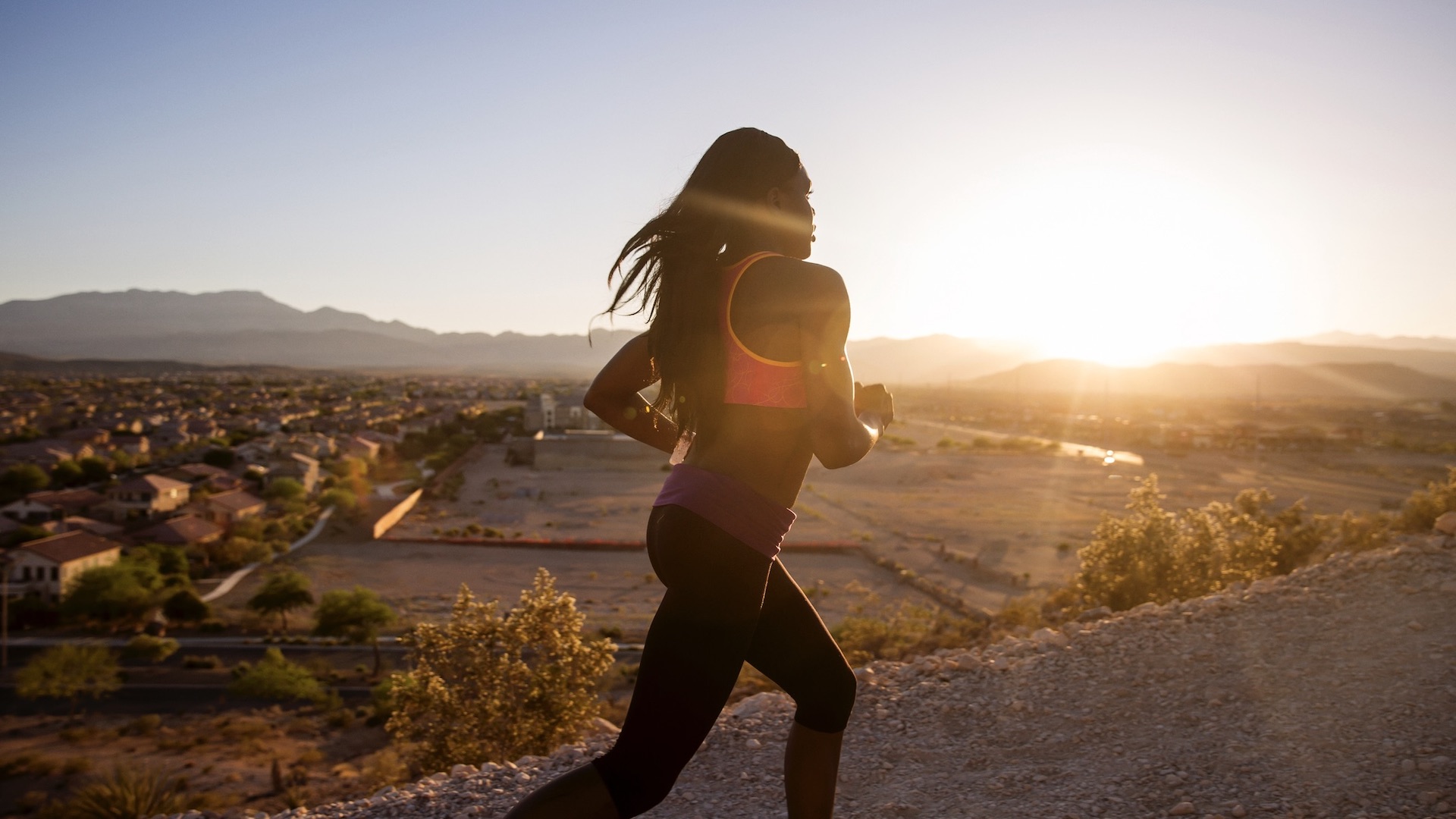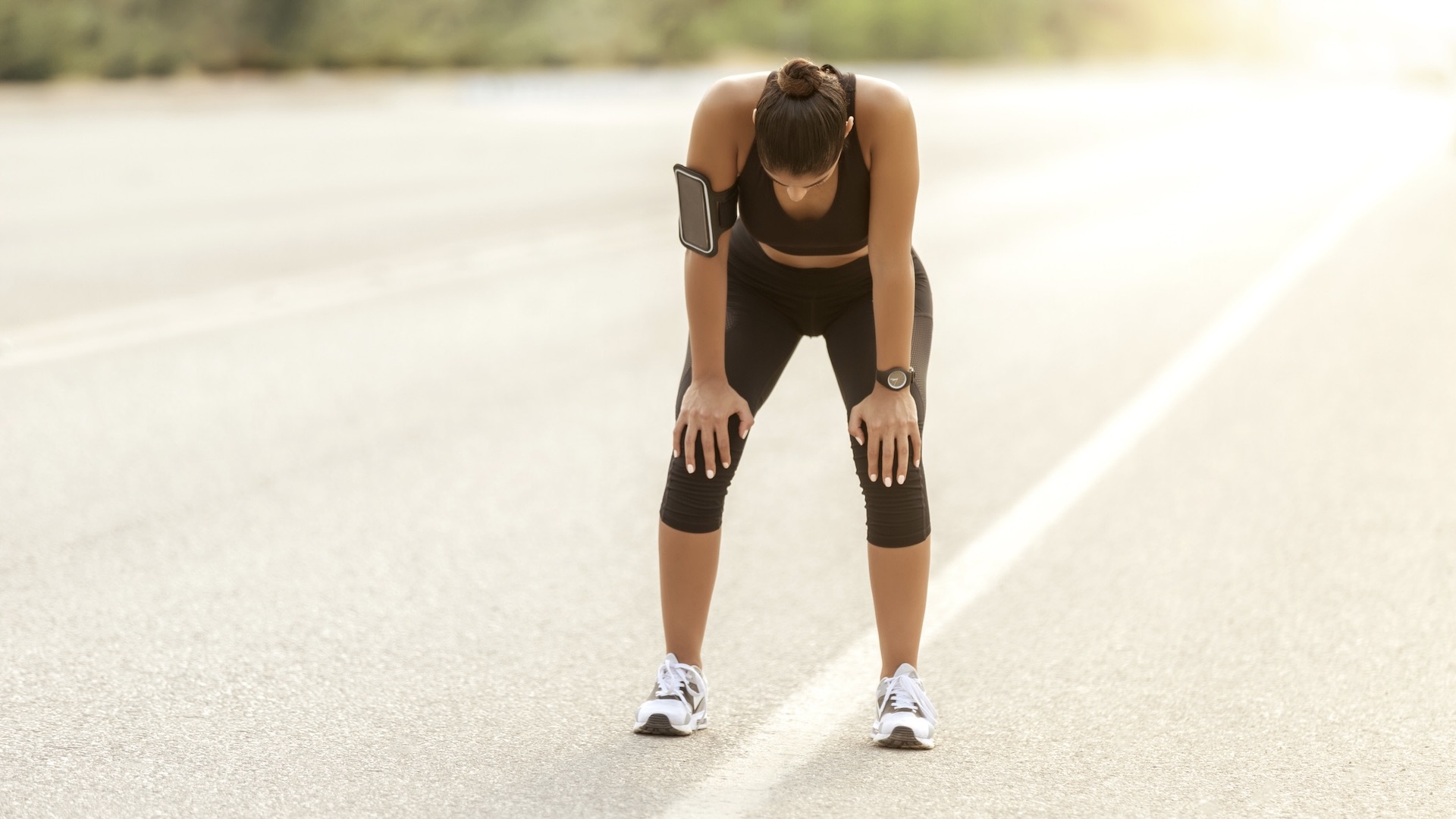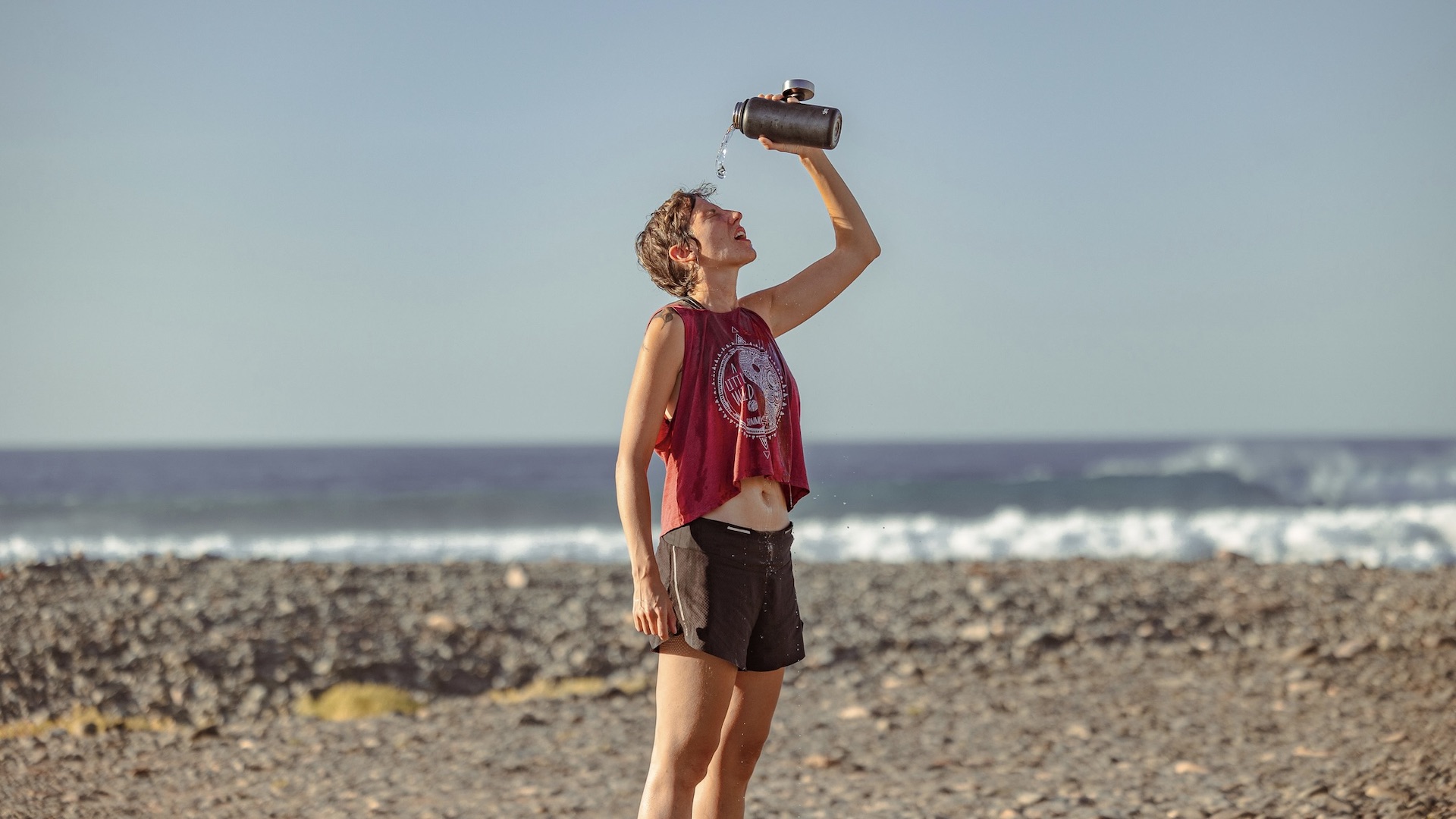How to acclimatize to running in the heat: 7 essential tips
When temperatures soar, find out the best strategy for safe running

Running in hot weather is rarely anyone’s top choice. As well as being uncomfortable and sweaty, running in the heat also carries some risks such as dehydration, heat exhaustion and heat stroke. It can also feel a lot harder to run in the heat because your body needs to work harder than usual to keep you cool.
Hot weather and increased humidity have several effects on the body. The heat can cause more blood flow to your skin, which, in turn, causes your heart to beat faster while circulating twice as much blood per minute as on a cooler day. All this happens before you even start to run, so when the temperature rises it’s important to listen to your body before even thinking about heading out.
A key step in being able to run safely and more comfortably in the heat is to take your time to acclimatize.
At the most basic level, acclimatizing to running in the heat means giving your body time to adjust. It can take many days – more than two weeks if you are in extreme heat – before you feel comfortable in the hot weather.
Think about how you are feeling when going for a walk first. Once this feels OK, you are ready to start building up to jogging and then running. But, even then, you should take it slowly. Building up the length and intensity of your running gradually is vital for comfortable and safe running in the heat.

How to acclimatize to running in the heat
Get used to the heat
You need to experience the heat to get used to it. This doesn’t mean lying on a sunbed and baking for hours, but you should try to spend some time outside allowing your body to experience the temperature.
Advnture Newsletter
All the latest inspiration, tips and guides to help you plan your next Advnture!
At first, you should walk, not run, and allow you body to adapt through experiencing to the heat. Within a few days, your body should start to make physiological changes including a decreased heart rate, increased blood plasma volume, and decreased perceived exertion.
Get outdoors
It can be tempting to continue to run indoors on a treadmill, but this won’t give you much chance of acclimatising to the heat outside, so a top tip is to get outdoors for short periods each day, or spend time outdoors in the months leading up to the high temperatures of midsummer.
If you live in a hot country, it’s a good idea to spend time walking and running in the earlier moths of summer so your body becomes familiar with the build up of warmer and hotter weather as the summer progresses.
Run slower
Once your GPS watch shows that your heart rate has returned to a more normal level, you can start to run, but make sure you build up the distance and don’t run hard.
Keep your running effort lower than you would normally. For example, if you normally run at a perceived rate of exertion of seven out of 10, dial that back to five.
Remember gender differences
Experts report that running in hot weather may be harder for women than men because women are not able to cool off as efficiently. Women sweat less and take longer to acclimatize to heat.
There is some debate about whether female hormones can also play a role in poorer heat acclimatization. Physiologist Dr Stacy Sims , a specialist in female health, believes the high-hormone phase – or luteal phase – about two weeks before menstruation – can make women less able to dissipate heat, although there are studies that dispute this.
If you are a women, it’s important to listen to your body to see how you are responding to the heat and perhaps take greater care during the first few days and up to a week when planning to run in hot weather.

Other tips: how to acclimatize to running in the heat
Find the shade
Whether you run on the roads or trails, it's a good idea to choose routes with some shade. Running where it is cooler – and earlier later in the day – gives your body time to acclimatise to the warmer temperatures.
In any case, it's rarely a good idea to run in the middle of the day when the sun is at its hottest.
Drink less (at first), then more
This tip needs to be done with care. Some studies show that a key way to achieve heat acclimation is by getting your body to learn how to do more with less water. This is called permissive dehydrating.
Runners can permissively dehydrate by only drinking to thirst when running and then rehydrating during the three to four hours after a run, rather than immediately. If you are going to be spending a lot of time in a hot climate it’s a good idea to consult a coach before attempting to permissive dehydrating.
After your body has acclimated, it’s vital to then hydrate really well when running on hot days. Drinking plenty of water with electrolytes before, during and after running is important for good health.
Be patient
It can take around two weeks, or more, of running in the heat every day before the body properly acclimatises. This happens through a gradual build up of running duration and intensity in the heat. Your need to be patient for safer running in the heat.
- Best trail running shoes: tested for comfort, grip, and stability

Fiona Russell is a widely published adventure journalist and blogger, better known as Fiona Outdoors. She is based in Scotland and is an all-round outdoors enthusiast with favorite activities including trail running, mountain walking, mountain biking, road cycling, triathlon and skiing (both downhill and backcountry). Aside from her own adventures, Fiona's biggest aim is to inspire others to enjoy getting outside and exploring, especially through her writing. She is also rarely seen without a running skort! Find out more at Fiona Outdoors.
